
The Smart Guide To Bridge
Published by
Smart Guide Publications, Inc.
2517 Deer Chase Drive
Norman, OK 73071
www.smartguidepublications.com
Copyright 2012 by Brent Manley. All rights reserved. No part of this book, including interior design, cover design, illustrations and icons may be reproduced or transmitted in any form or stored in a retrieval system, or transmitted by any means, electronic, mechanical, photocopying, recording, or otherwise, without written permission from the publisher. Although every precaution has been taken in the preparation of this book, the publisher and author assume no responsibility for errors or omissions. The author and publisher specifically disclaim any responsibility for any liability, loss, or risk, personal or otherwise, which is incurred as a consequence, directly or indirectly, of the use and application of any of the contents of this book.
For information, address: Smart Guide Publications, Inc. 2517 Deer Creek Drive, Norman, OK 73071
SMART GUIDE and Design are registered trademarks licensed to Smart Guide Publications, Inc.
International Standard Book Number: 978-1-937636-31-9
Library of Congress Catalog Card Number:
11 12 13 14 15 10 9 8 7 6 5 4 3 2 1
Printed in the United States of America
Cover design: Lorna Llewellyn
Copy Editor: Ruth Strother
Back cover design: Joel Friedlander, Eric Gelb, Deon Seifert
Back cover copy: Eric Gelb, Deon Seifert
Illustrations: James Balkovek
Production: Zo Lonergan
Indexer: Cory Emberson
V.P./Business Manager: Cathy Barker
ACKNOWLEDGMENTS
If not for my good friend Patty Johnson, this book might never have made it into print. Patty is a highly regarded tournament director for the American Contract Bridge League (ACBL), the worlds largest bridge organization.
Nearly twenty-three years ago, Patty called me one day to say there was an opening on the staff of the magazine that the ACBL puts out every month. I jumped at the opportunity and with the help and guidance of editor Henry Francis, I learned the ropes of bridge writing.
One day in 1990, I interviewed the man who at the time was the number one-ranked bridge player in the worldBob Hamman. I thought his story was worth more than a magazine article, and in 1994 we published a book about his life. The book is now in its third printing.
That book would not have happened without the help and encouragement of Donna, my wife and favorite bridge partner. She has inspired me to take on other major projects and has provided invaluable assistance every step of the way.
The World Bridge Federation (WBF) has given me many opportunities to hone my skills, and I want to thank former WBF President Jose Damiani and current WBF President Gianarrigo Rona for believing in me as the chief editor of the Daily Bulletin at the world championships.
I dedicated one of my books to my late father, who told me once to always do my best. I feel certain that he would be happy to know that I have always remembered those words.
EDITORS NOTE
While it is editorially appropriate in our politically correct times to write he or she, him or her, his or hers, we decided to make it easier to read this book by using he, him, his, etc., since using the alternative created a cumbersome and ungainly, difficult to read manuscript. For the purposes of this book he means he or she, him means him or her, his means his or hers, etc. Similarly, we refer to all the players as male, acknowledging that there are an equitable number of female players. This is consistent with the practice of other books in the field. We hope you are not offended by our decision and that you agree with us that this decision makes for an easier to read book.
INTRODUCTION
There are many theories about the origin of the game of bridge. Some of them date the game back to the early 16th Century in England, where the game of whist, a predecessor to bridge, was mentioned in a church sermon. No doubt parishioners were warned against the evils of card playing.
Through the years, whist became auction bridge, which was so popular that an auction bridge association sprang up in the U.S.
Everything changed in 1925, the year industrialist Harold Vanderbilt invented contract bridgethe form of the game now played around the world. It happened aboard the cruise ship S.S. Finland as it made its way through the Panama Canal. Vanderbilt had been working on a change in the scoring, and he perfected it on that trip.
Contract bridge swept the nation practically overnight. By 1929, the American Auction Bridge League dropped the word auction from the name because it was clear that Vanderbilts idea had become dominant.
The game is little changed from that time, except that it is now played around the world. The umbrella organization known as the World Bridge Federation boasts 126 member countries. Each one has a bridge federation. In North America, the American Contract Bridge League has 166,000 members, more than any other country.
It is estimated that 20 million people in North America play bridge, mostly at home with friends, but the ACBL sanctions more than 1,200 tournaments every year and has more than 3,200 affiliated bridge clubs. More than 5,000 bridge teachers certified by the ACBL are hard at work year-round teaching the game to young and old.
Bridge has been recognized as a sport by the International Olympic Committee and is one of the featured games at the International Mind Sports Associations tournament that follows the Olympic Games every four years.
The game of bridge has attracted famous personalities, including Microsoft founder Bill Gates and investment guru Warren Buffett, both enthusiastic fans. Buffett has lent his name to a biennial bridge competition between European and American stars modeled after golfs Ryder Cup. The bridge version is called the Buffett Cup.
Bridge is a game that can be played well into your later years, and the advent of services on the Internet make bridge accessible to even those who cant leave their homes. Via the Internet, bridge fans can watch live championship matches no matter where they take place in the world.
You can learn the rudiments of bridge relatively quickly. With an unlimited number of challenges to the intellect, its a game you never get tired of playing. Every time you pick up a hand, its a different adventure.
Bridge can provide a social outlet via clubs. If you can play, you can find a welcoming groupand new friendspractically anywhere in the world.
In bridge, you can compete against the best simply by buying an entry at a tournament. If you prefer a less-harrowing setting, just about every tournament has games for less-experienced players.
I have been playing bridge for more than 40 years, and it thrills me today as much as it did when I was learning. In fact, Im still learning the game. I doubt I will ever stop.
Brent Manley
February 2012
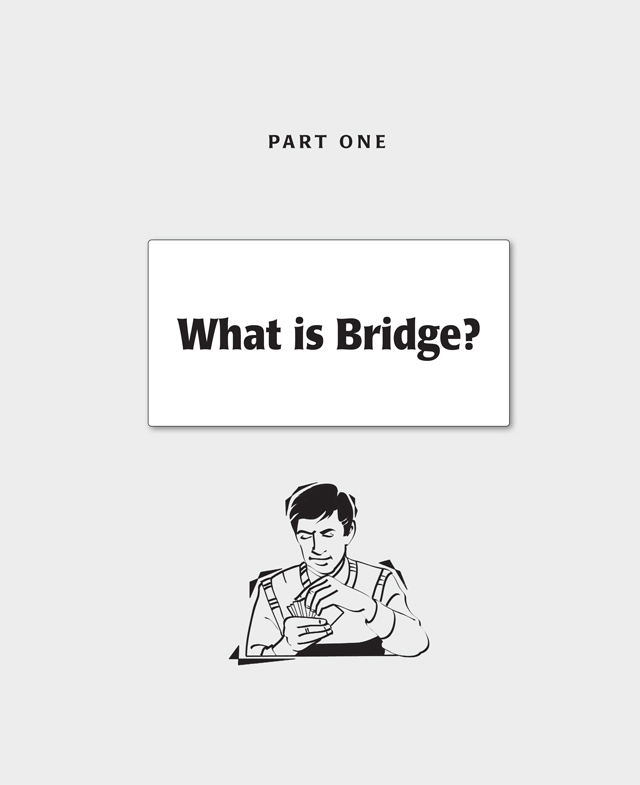
Chapter 1
 Why Bridge?
Why Bridge?
In This Chapter
- The worlds most popular card game
- Benefits of bridge besides fun
- Getting hooked
- Finding games
In this chapter you will learn that bridge is the most popular card game in the world, how it has captured the fancy of presidents of the United States, Supreme Court justices, the worlds richest manplus movie stars and athletes.
You will find out that playing bridge can help your brain stay sharp, expand your social network, and provide a welcoming open door wherever you travel in the world. Tournament players have the opportunity to play against and learn from the best in the worldsimply by buying an entry.
Next page
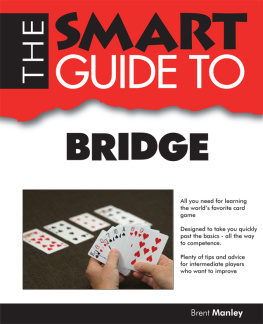
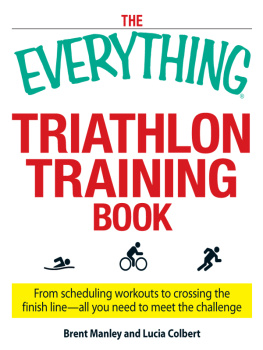

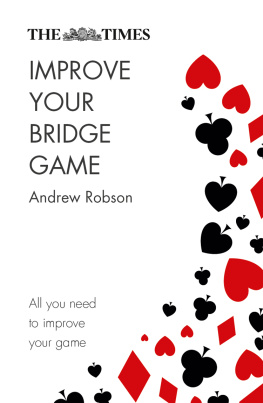

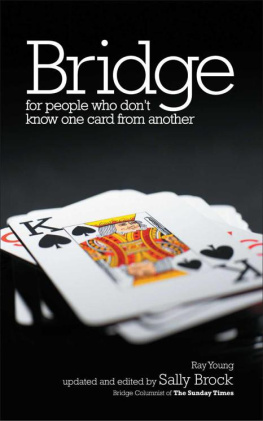
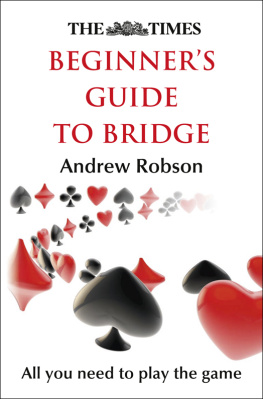
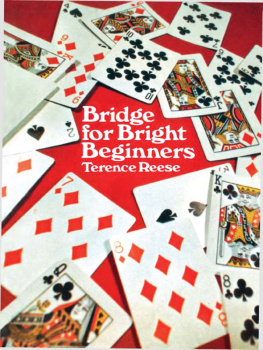

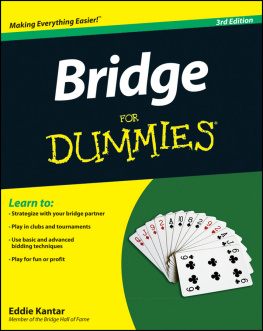
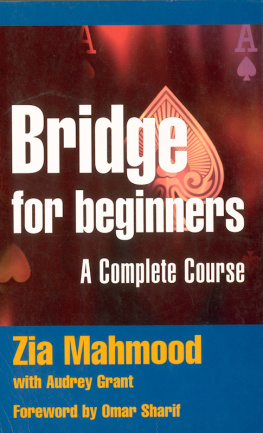
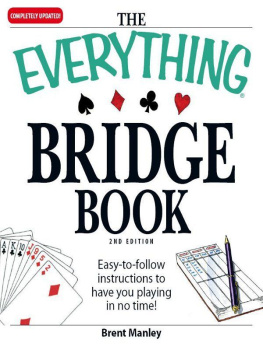
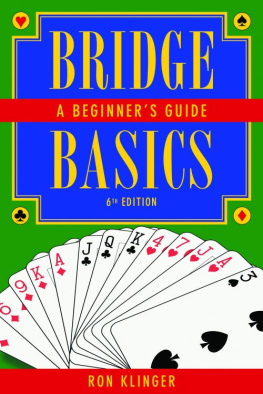
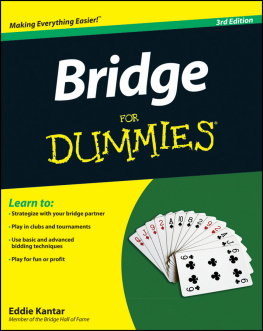


 Why Bridge?
Why Bridge?